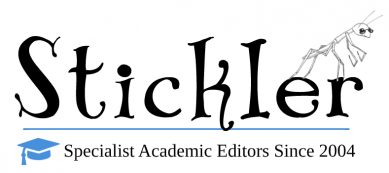Information is everywhere, but what kind of information do you need for a research paper? Sources come in many forms and sometimes it can be hard to figure out exactly what kind of source you need. Here are some definitions and tips to help you decide what kind of material you need for your academic papers.
Primary Sources
Primary sources are usually original material on which you base your research. What this material looks like varies by academic field. If you are writing a research paper in literature, a primary source might be a specific literary work you are analyzing. If you are working on a project in history, you might use letters, diaries, artifacts, reports, and other kinds of documents from the event or time you are writing about. These types of materials might be housed in an archive or reproduced in critical editions. Social media and news reports following an event might also be a primary source. A project in the social sciences might look at data someone else gathered or at data you collect in a study. This data can be quantitative or qualitative.
Secondary Sources
Secondary sources discuss, analyze, and interpret primary sources. These are usually academic books, peer-reviewed articles, scholarly papers or reports, theses and dissertations, and similar types of material. Secondary sources help you to understand the current state of research around the primary source material you are working with. You can use secondary sources to understand current research trends in your field, find other perspectives, and discover new ways to approach your topic. A good research paper engages with secondary sources in its field of study and then adds new information to the current body of research.
Tertiary Sources
Tertiary sources summarize secondary literature on particular topics. This type of source includes encyclopedias (such as Wikipedia), textbooks, and dictionaries. Tertiary sources are very helpful for understanding the basics of your topic, but you should avoid citing them. It is much better to use secondary sources to show that you have done your research. These sources should be used for the beginning stages of research and they might even point you to scholarly work relevant to your field. For example, a Wikipedia article on a well-known study might cite several articles published in relation to that research, perhaps as follow-ups or critiques. You can use those citations to find the original articles and then use those in your paper as well.
For more information on types of sources, check out Kate L. Turabian’s A Manual for Writers of Research Papers, Theses, and Dissertations, the MLA Handbook, and the Publication Manual of the American Psychological Association. As you start to write your paper, keep these types of sources in mind. And remember, we can help you to organize your sources, ensure you have followed the correct referencing style as laid out by your school or journal, and verify that all citations are complete and correspond with entries in the reference list.









